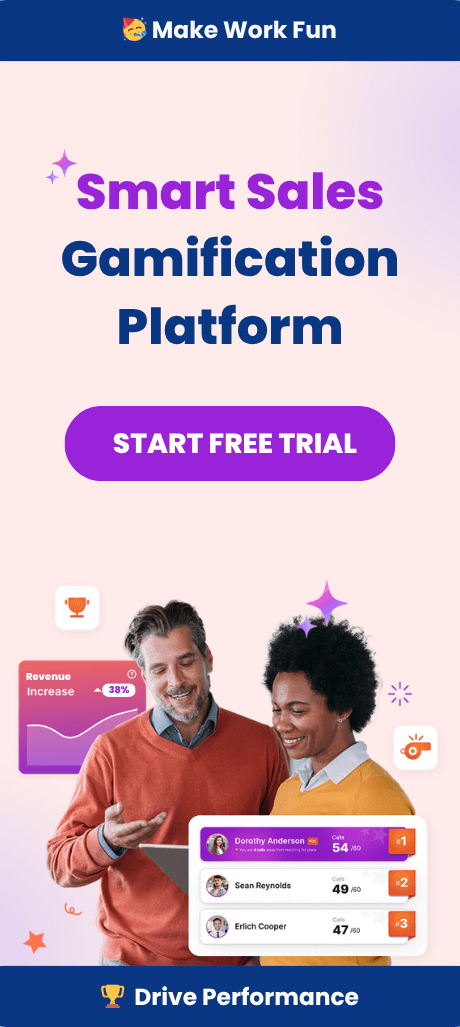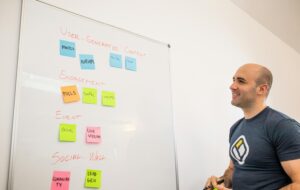Gamification’s Strategic Role in Modern Sales
Executive leaders tasked with driving sales performance are no strangers to the ever-evolving landscape of team motivation and behavioral economics. Yet, amid shifting market conditions and rising performance expectations, one approach continues to create measurable results: gamification. While gamification in sales is not entirely new, the sophistication, scale, and impact of today’s platforms signal a turning point for organizations aiming to instill accountability, foster engagement, and drive revenue growth. This narrative explores the whys and hows of integrating gamification into high-performing sales structures, unearthing benefits and caveats with a strategic lens relevant to senior sales, enablement, and RevOps executives.
Understanding the Why: Beyond Prizes and Points
If one misconception endures in executive circles, it is that gamification begins and ends with flashy badges or quarterly contests. In reality, the psychology fueling gamification is deeply rooted in how people experience achievement, feedback, and social status among peers. Modern sales gamification platforms harness these motivations by creating transparent and dynamic performance environments. They make goals visible, enable peer benchmarking, and transform data that might otherwise collect digital dust into actionable, real-time feedback. These behavioral incentives are more than nice-to-haves; they are often the scaffolding that supports cultural shifts toward higher engagement and accountability.
The Business Value of Gamification Platforms
For companies already leveraging advanced gamification software, the business case extends beyond morale. When platforms are well-implemented, executives can point to:
- Increased quota attainment: Teams with transparent, competitive digital leaderboards consistently demonstrate stronger quota achievement and higher revenue per rep.
- Better pipeline visibility: Gamified systems encourage frequent CRM updates and accuracy, turning data hygiene into a shared pursuit.
- Reduced turnover and burnout: By making wins (big and small) visible, companies reinforce intrinsic and extrinsic motivators—the lifeblood of retention.
Still, the true ROI materializes in the platform’s ability to embed continuous feedback loops and transform casual recognition into a visible, celebrated event. This approach magnifies alignment and rewards the right behaviors at scale.
Driving Engagement through Real-Time Feedback
Executives who seek to energize distributed or hybrid teams know that feedback delays are the enemy of motivation. In a traditional sales environment, results and recognition are often decoupled—reps might wait weeks for a pat on the back. In a gamified system, feedback is instant. Reps see their progress climb the sales leaderboard the moment they update an opportunity, book a meeting, or log a deal. This immediacy does not just improve engagement; it cultivates a culture of continuous improvement.
- Top performers receive timely peer validation, fueling momentum.
- Mid- and lower-tier reps identify gaps before the end of the quarter, spurring earlier course correction.
- Managers can deliver targeted coaching informed by visible strengths and weaknesses—not just anecdotal evidence.
This feedback loop is especially critical as teams scale or transition across geographies, reducing the risks of disengagement or performance cliffs.
Data-Driven Accountability and Transparency
The new mandate in sales ops is visibility: not just for management, but for every contributor. Traditional KPI dashboards have historically lacked this democratizing effect, often gating actionable insights behind manager logins or monthly reviews. Gamification in the workplace upends this hierarchy. Leaders who deploy a customizable leaderboard or employee leaderboard within an engagement platform make every metric—conversion, pipe coverage, call volume—a team matter. As a result, sales reps feel ownership over targets and data accuracy, while leaders obtain a ground truth for forecasting and resource allocation.
The Expanding Role of AI in Gamified Sales Workflows
With the recent surge in ai gamification and ai powered sales platforms, the possibilities for personalization and adaptability have multiplied. AI-infused game mechanics allow systems to:
- Analyze behavioral patterns and surface timely nudges to reps at risk of falling behind
- Personalize challenges based on tenure, previous performance, or territory
- Predict attrition risk and pre-emptively adjust recognition or coaching strategies
Such sophistication makes gamification increasingly resistant to the “one-size-fits-all” criticism, positioning it as a mainstay of adaptive performance management and employee engagement in large, complex sales organizations.
Building Effective Sales Contests: Strategy over Spectacle
Executives keen on maximizing the impact of gamification must design competitions for work and sales contests with intention. High-performing programs balance extrinsic motivators (incentives, prizes, public recognition) with intrinsic rewards (mastery, camaraderie, achievement). Research shows that blending both makes contests sustainable and fair. Yet, pitfalls abound—contests with opaque rules, overlong duration, or a narrow focus on revenue quickly lose steam and encourage unhealthy competition. Instead, successful sales contests align with strategic business outcomes, rewarding behaviors that move needles across pipeline stages (such as activity metrics, learning milestones, or collaboration events).
For inspiration on structuring contests and avoiding common traps, executive readers may reference insights in Leaderboards Done Right: Avoiding Pitfalls.
Organizational Culture and Gamification Integration
Culture remains the principal predictor of long-term ROI from gamification investments. Organizations where leaders model transparency, celebrate effort, and nurture peer-to-peer recognition see the greatest lasting adoption. Here, sales gamification seamlessly reinforces an existing performance culture without appearing forced or facile. However, teams with fragmented or competitive-only cultures may initially resist, viewing gamified systems as punitive or intrusive. In such cases, introducing gamification as part of a broader culture of continuous feedback—rather than a monitoring system—increases trust and engagement over time.
Mobile-First and Distributed Team Enablement
Modern sales teams are often hybrid, remote, or functionally distributed. The ability to deliver gamification through mobile apps and cloud-based platforms is now table stakes. When sales reps receive personalized progress notifications, live leaderboards, or contest updates on their devices, the sense of inclusion and urgency is preserved beyond the traditional office. Platforms like Spinify deliver these real-time updates and make remote sales team competitions possible without friction, enabling engagement regardless of geography or schedule.
Case Studies in Impact: Companies Using Gamification for Employee Engagement
Several global organizations have documented improvements in sales productivity and retention following systematic adoption of gamification and employee engagement platform technologies. These companies have implemented:
- Dynamic leaderboards for transparent progress tracking
- Weekly recognition ceremonies tied to behavioral achievements (not just revenue)
- Peer-nominated prizes that reward teamwork and collaboration
The result is more informed management decisions, stronger internal collaboration, and a measurable uptick in employee satisfaction. Interested readers can explore additional industry case studies in How Gamification Software Supercharges Your Sales KPIs for Success.
Executive Oversight: KPIs and Measuring Effectiveness
For C-suite and RevOps leaders, the temptation exists to rely on anecdotal evidence of gamification’s impact. However, the most successful programs track leading indicators and lagging outcomes side by side. Key KPIs to monitor include:
- Activity-based metrics (meetings booked, proposals sent)
- Engagement data (platform logins, leaderboard interactions)
- Long-term trends in quota attainment and rep churn
By incorporating these metrics into ongoing QBRs or executive dashboards, leaders can refine gamification initiatives, double down on winning tactics, and quickly sunset underperforming elements. For insights on rethinking traditional account manager KPIs in the current market, executives may review Why Account Manager KPIs Must Evolve in 2025.
Common Pitfalls and How to Navigate Them
Even as gamification matures, execution errors persist. Programs may stall due to:
- Lack of leadership buy-in
- Overly complex or unintuitive rules
- Failure to connect contest outcomes with higher-level business goals
Mitigating these risks requires regular stakeholder feedback, internal champions among the manager ranks, and a willingness to iterate contest structures as company priorities shift. Executives are well served by thinking of gamification not as a single transformation but as a series of small, sustained enhancements to culture and workflow.
The Future of Sales Gamification: Trends and Predictions
Looking ahead, the integration of AI, hyper-personalized challenges, and holistic engagement metrics will define the next evolution of sales gamification. Platforms will become increasingly modular, allowing organizations to tailor rules, recognition mechanisms, and feedback channels to match ever-nuanced workforce dynamics. With millennial and Gen Z professionals comprising a larger share of the workforce, expectations for frequent, digital-first feedback and public recognition will only rise. Organizations prepared to invest in adaptable, high-trust gamification platforms will be best positioned to foster loyalty and drive sustained revenue growth.
Strategic First Steps: How Executives Can Lead Adoption
For senior leaders ready to harness gamification’s benefits, a strategic pilot is often best. Select a cross-functional team, identify a key business challenge (like improving CRM hygiene or accelerating ramp time for new hires), and deploy a best gamification platform with robust data integration and support. Build in transparent feedback cycles, and avoid complex prize structures initially—focus on clarity, recognition, and frequent communication. Soliciting honest feedback both during and after the pilot will inform whether to scale up and help design future iterations for improved alignment and outcomes. Executives interested in exploring scalable solutions can book a demo with Spinify to evaluate fit within their unique sales environment.
Conclusion: Gamification as a Pillar of Modern Sales Performance
The strategic adoption of gamification in sales is proving itself as more than a fleeting trend. When thoughtfully aligned to organizational values, powered by real-time data, and championed from the top, gamification can anchor a culture of engagement, accountability, and excellence. For executive leaders, the opportunity lies not just in the adoption of the right technology, but in evolving their leadership playbook to celebrate performance at every level, ensuring every win is visible, valued, and multiplied.



